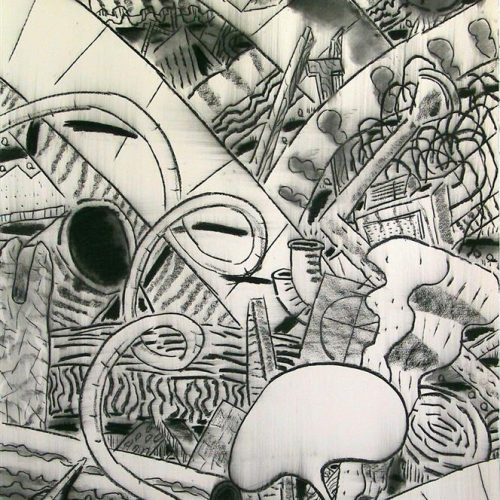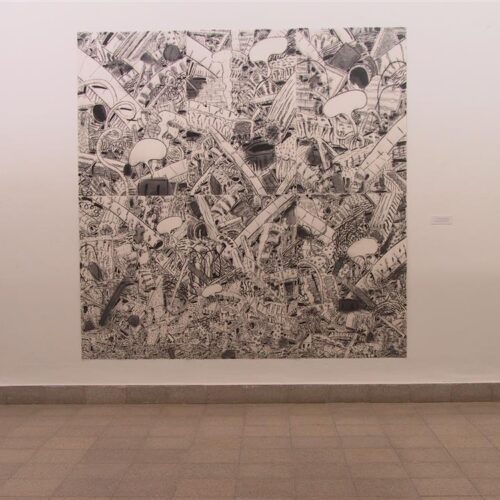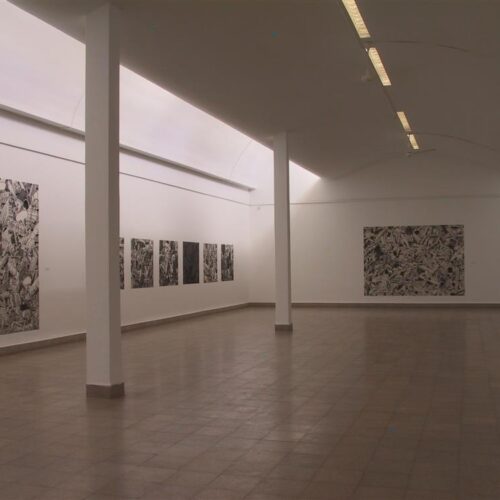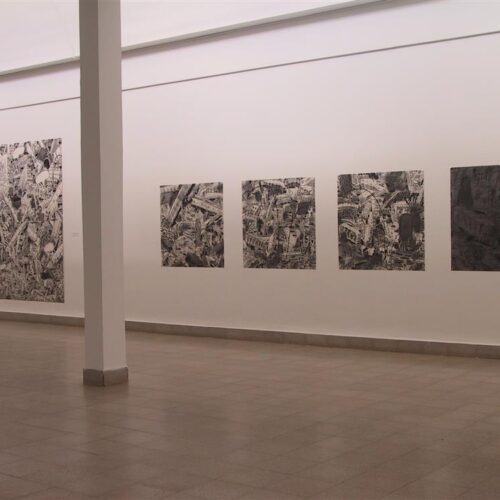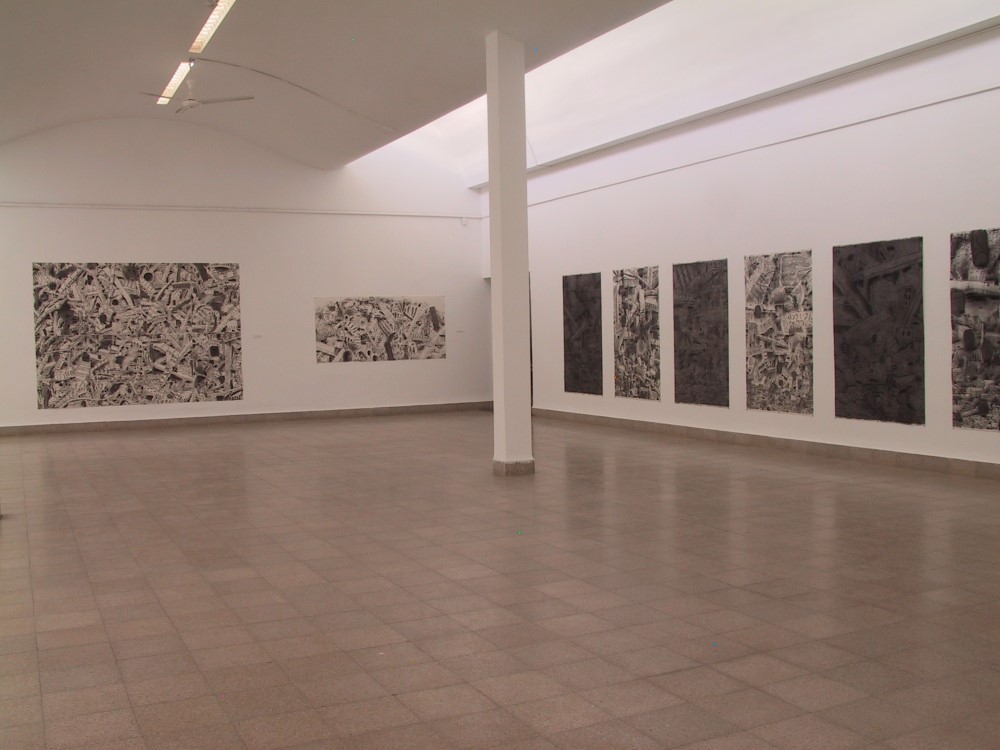
In 2002 Larry Abramson started to work on the “Piles” series, which centers on images of accumulations of building waste that have piled up in the landscape as a result of the collapse of buildings. This turn to drawing from “nature” entailed something of an attempt to take hold of seemingly negligible and trivial everyday matter, by means of a recurring manual action intended to “motivate” a dynamic, to kindle a connection between the eye and the hand, and to bring about a renewed movement between “world”, psyche and consciousness. The “Pile” series linked two genres Abramson had engaged with previously – landscape and still life painting – and became a focus of a fascinating dialogue that he initiated with Felix Nussbaum: “We are all Felix Nussbaum” was the title Abramson gave to an essay he published in that period (June 2002), which dealt with the relations between art and history and related to Felix Nussbaum and to his last work, Death Triumphant, a painting he managed to complete in his hiding place in Brussels, before he was caught and later murdered in Auschwitz in 1944. In his essay, Abramson referred to an image taken from the writings of Walter Benjamin – that heap of ruins that piles up before the gaping eyes of the Angel of History as he is pushed backwards in the gust that sweeps the spirit of progress along.
Although Abramson’s dialogue with Nussbaum has been a continuous one, most of the sub-series of the “Pile” series contain no direct references to Nussbaum’s works, nor any components from the earlier works of Abramson himself. At the later, mature stage of the series, objects that Abramson engaged with extensively in the past, such as skulls, seep into the works, and in the last work of the entire series, Felix’s Pile, there are also objects from the “pile” in Nussbaum’s last painting: the artist’s palette, a microscope, barbed wire, a clock, an easel, a book with alchemical symbols, musical instruments, etc. As the series developed the pile began to fill the boundaries of the frame from edge to edge. The space of the painting became inverted, and the upper part of the pile pushes forward until it seems that the body of the painting rises up over the imaginary space of the viewer. The format of the drawing gradually grew, and received a vertical structure, more bodily than landscape-like. From now on the “still life” of the pile is a tactile space that is in motion: it rises upward, collapses to the sides, its components join together and break apart, it winds and curls but is not tempted into caprices. The still and abandoned landscape signifies a scene that the landscape painters did not engage with. In the language of Western art and culture no terms have been coined to describe a landscape scene of this kind, but only by means of acknowledgment of it can a struggle with the concrete actual reality become possible.
Larry Abramson
The Pile, 2002-2004
Curators: Inge Jaehner, Galia Bar Or
September-December 2005


